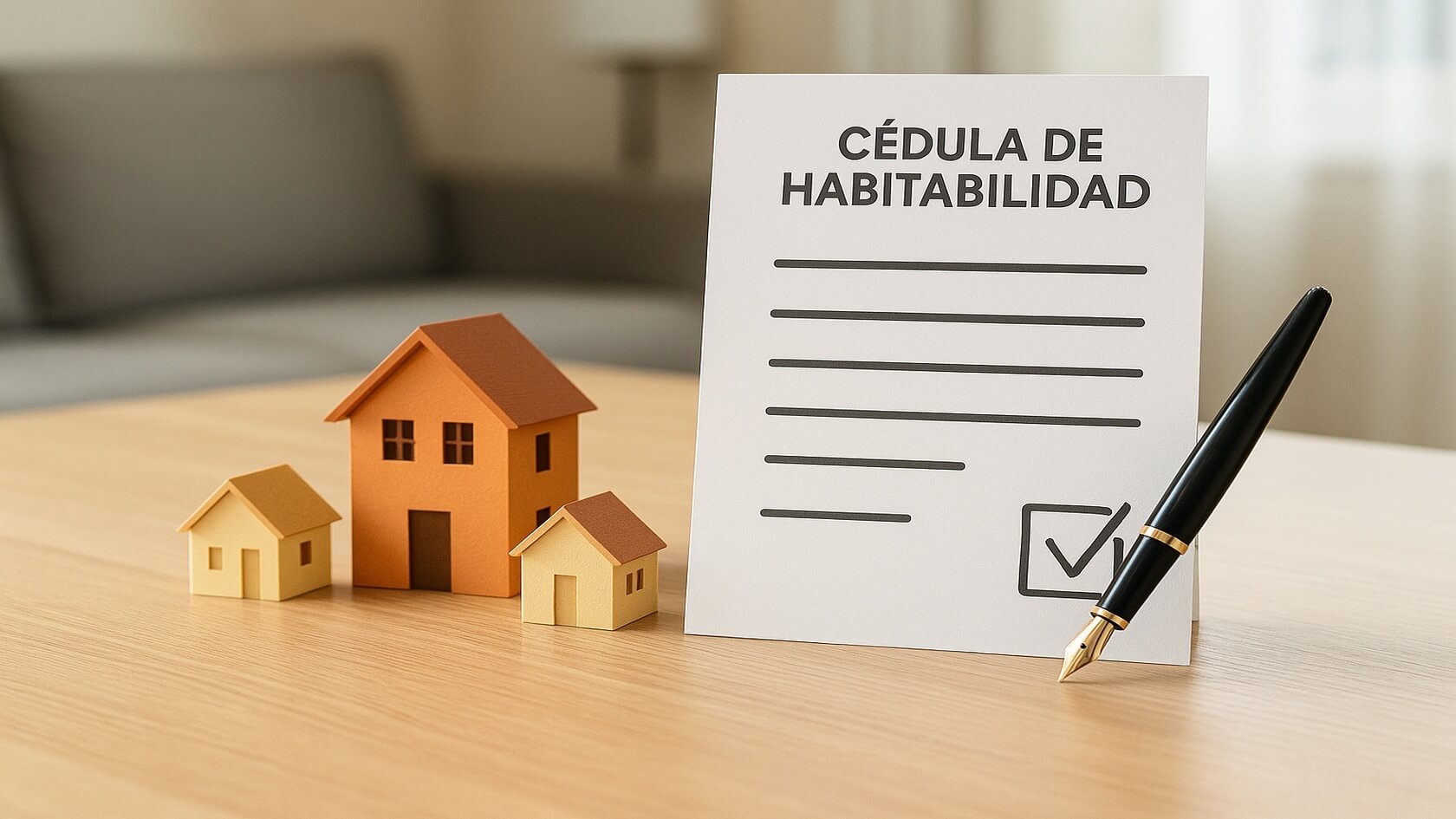
What Is the Certificate of Habitability and When Is It Required?
Have you ever wondered what the certificate of habitability is and why it’s so important when you want to buy a home or sell a property? This document is essential in the real estate sector, as it certifies that a dwelling meets the minimum conditions of safety, sanitation, and hygiene to be legally inhabited. Although its requirement may vary depending on the autonomous community, it is indispensable for many procedures: from registering water, electricity, or gas utilities to formalizing a property sale or rental agreement.
At Hoffman Real Estate, we explain in detail what the certificate of habitability is, when it is needed, how to obtain it, what information it contains, how much it costs in 2025, and what to do if it is lost.
What is the Certificate of Habitability?
Knowing what the certificate of habitability is can help you ensure that a home meets the minimum standards to be considered suitable for living.
It is an official document issued by the regional or local administration that certifies that a property complies with the minimum habitability requirements. These standards are related to technical, structural, health, and safety aspects. Although each autonomous community can set its own regulations, all agree that the home must be a suitable and dignified space for living.
This certificate evaluates elements such as usable surface area, interior layout, ventilation, access to natural light, energy efficiency, and the functionality of living spaces. It also guarantees that the home has basic installations such as a kitchen, bathroom, wastewater drainage, electricity, and potable water.
What is the Certificate of Habitability For?
The main function of the certificate of habitability is to protect the user by ensuring the property meets the basic minimum conditions that allow for a safe and healthy living environment. However, it is also essential for completing numerous real estate transactions.
Its most common uses include:
• Formalizing the sale of a property in certain autonomous communities
• Signing a legal rental contract
• Registering a property as a habitual residence
• Requesting occupancy or renovation permits
• Registering essential utilities such as electricity, water, or gas
• Certifying the legal residential use before town halls or notaries
Therefore, obtaining this document is fundamental if you want to sell or rent your property or if you’ve just purchased a second-hand home and need to complete administrative procedures or contract utilities.
Can you sell or Register a Property without a Certificate of Habitability?
Understanding what the certificate of habitability is also means knowing in which cases it is mandatory. In some regions, such as Madrid, having a certificate of habitability is not required to sell a property. In others, like Catalonia or the Balearic Islands, the law mandates that any operation involving the sale, rental, or transfer of use must be backed by a valid certificate of habitability.
In Catalonia, for example, Decree 141/2012 expressly regulates the obligation to have the certificate for any transfer of the property. This includes not only sales but also inheritances, donations, or leases. Consequently, lacking this document in certain regions may prevent you from registering the transaction or activating utility services.
How to Obtain the Certificate of Habitability in 2025
Now that you know what the certificate of habitability is, to obtain the updated document, the first step is to hire a licensed architect or architectural technician. This professional will carry out a technical inspection of the property to verify that it meets all the requirements established by regional regulations.
Once the inspection is completed, the technician will issue a favorable habitability report. This report must be submitted to the corresponding official professional association and then to the competent authority (usually the regional housing department or the city council) to request the issuance of the certificate. The issuance period can vary by region but generally takes between one and three months. In many regions, the process can also be done online via the electronic headquarters, making the process easier and faster.
It is advisable to have all the necessary documents: property deeds, cadastral reference, owner details, floor plan of the dwelling, and any previous licenses or rehabilitation certificates.
What are the Requirements for a Property to Obtain the Certificate of Habitability?
To obtain the certificate of habitability, a property must meet minimum conditions that guarantee its use as a permanent residence. These criteria may slightly differ by autonomous community, but generally include:
• A minimum usable surface area (ranging from 30 to 38 m² depending on the number of occupants)
• Presence of habitable rooms such as a bedroom, living room, kitchen, and bathroom
• Minimum ceiling height (typically 2.5 meters)
• Natural ventilation and adequate lighting in every room
• Basic installations in good condition: plumbing, electricity, drainage, and water supply
• Minimum energy efficiency, as required by the Technical Building Code
• Structural safety, accessibility, and fire protection standards
Newly built or recently renovated homes usually have to meet stricter requirements than older buildings.
What Types of Certificate of Habitability are There?
To better understand what the certificate of habitability is, it’s useful to know that in Spain there are mainly three types, depending on the state of the property:
• First Occupation Certificate: Issued for newly built homes. It certifies that construction has been completed and the property can be legally inhabited.
• Second Occupation Certificate: Issued for existing properties that have been previously inhabited. It is required in sales or rentals when the original certificate has expired or is not available.
• Rehabilitation Certificate: Issued after major structural renovations or refurbishments that affect habitability. It confirms that the work complies with current regulations.
Some communities, such as the Principality of Asturias, have replaced the first occupation certificate with an equivalent document called the first occupancy license.
How much does the Certificate of Habitability Cost in 2025?
The cost of the certificate of habitability can vary depending on several factors, such as the autonomous community, the type of property, and the professional hired. Estimated costs for 2025 are:
• For a standard apartment: between €65 and €120
• For a single-family home: between €75 and €160
• For a commercial premises: between €150 and €300
This cost includes the architect’s visit, the technical certificate, the official association’s endorsement, and administrative fees. In some cases, discounts are available when applying jointly with other procedures, such as the energy performance certificate. It is advisable to request several quotes and ensure that the professional is licensed and authorized to issue the report.
What Information Does the Certificate of Habitability Contain?
The content of the certificate may vary slightly depending on the community, but it generally includes the following:
• Exact address of the property
• Usable surface area of the home
• Number of rooms and habitable spaces
• Maximum allowed occupancy
• Date of issue and expiration
• Administrative file number
• Information of the signing technician and their license
• Identification code of the regional registry
This document can be submitted in physical or digital format and has full legal validity as long as it is current.
How Long is the Certificate of Habitability Valid?
The validity of the certificate of habitability depends on the autonomous community. Generally, certificates issued after 2003 are valid for 15 years. Once this period expires, it must be renewed to continue using the property for legal and administrative purposes. Some regions issue certificates with shorter validity for homes used for temporary purposes, such as vacation rentals. Requirements may also vary depending on the building’s year of construction. If you plan to sell or rent your home in the coming years, it’s worth checking whether your certificate is still valid.
How to Request a Duplicate Certificate of Habitability?
If you lose your certificate of habitability, you can request a duplicate as long as the original is still valid. This process is carried out through the regional housing authority and does not require a new technical inspection.
To obtain the duplicate, you must provide documents proving your connection to the property, such as:
• Property deed or purchase contract
• Identity document (DNI or NIE)
• Rental agreement (if you are a tenant)
• Recent utility bills
• Legal authorization if acting on behalf of the owner
In many cases, the process can be completed online and involves a small fee.
Is the Certificate of Habitability Mandatory in 2025?
Although there is no national regulation requiring the certificate of habitability in all cases, many autonomous communities make it mandatory for certain procedures. Not having it can limit your ability to rent, sell, or contract essential utilities for the home. Therefore, even if it’s not compulsory in every region, it is highly advisable to have a valid certificate if you are a property owner, buyer, or tenant. It also provides legal security and transparency in any real estate transaction.
Why Knowing What the Certificate of Habitability is Can Help you Avoid Problems
The certificate of habitability is a document that certifies that a home meets the legal conditions to be inhabited. It is required in many communities to rent, sell, or register utility services. Although the process to obtain it is simple, not having it can lead to complications.
At Hoffman Real Estate, we guide you to ensure everything is in order so you can move forward confidently with any real estate operation - whether buying, selling, or even getting your property appraised.











